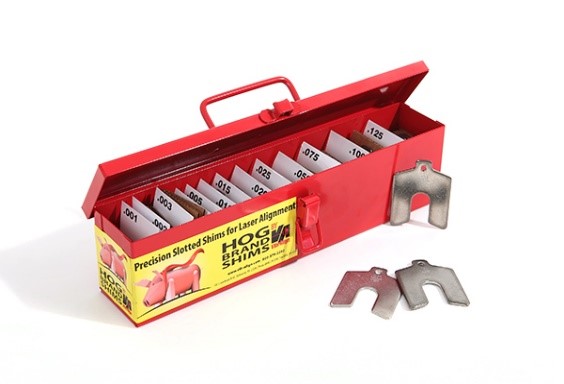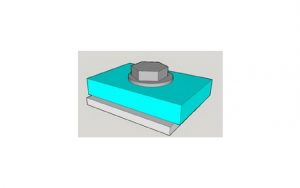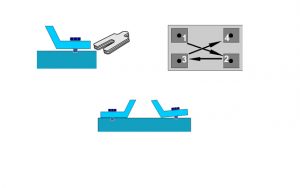Author: Stan Riddle, VibrAlign
Pre-cut stainless steel shims are almost universal for use in shimming motors to achieve precision  alignment. While they are not cheap, cutting individual shims is MUCH more expensive and time consuming than using pre-cut shims.
alignment. While they are not cheap, cutting individual shims is MUCH more expensive and time consuming than using pre-cut shims.
While using these types of shims is common, actually measuring shim thickness is not… but it should be.
Regardless of whether you are installing new machinery, or re-aligning machine components after other maintenance has taken place, make it a common practice to measure the thickness of the entire stack of shims under each foot.
Let me offer an example. I’m installing a new motor-pump assembly on a skid. The entire machine came in rough aligned from the pump seller. I would rough check the alignment using a straight edge. If it were close, I would loosen the motor hold down bolts. I would remove the shims that came with the machine, measure the thickness of each foot’s stack of shims with a micrometer. I would then replace the shims with pre-cut shims, measuring the new stack to make sure the proper thickness is the same. I would then perform a precision laser alignment of the shafts, measuring with a mic again, to make sure what I’m adding is actually what I have, regardless of the thickness dimension marked on the shim.
Why do so much measuring? Simple! You are moving a motor vertically, to measurements within a few thousandths of an inch. But if you don’t measure shim thickness, you could:
- Still be out of alignment, due to the difference between marked shim thickness, and measured shim thickness.
- Induce a soft foot condition, because you could have differing shim stack thicknesses across each measurement plane (inboard and outboard).
- Have to make one or more additional moves.
Does mic-ing shim thickness take a little more time? Yes. Will it greatly speed up your alignments, improve your accuracy, increase your trust in your measuring tool, and keep you from tightening and loosening bolts so much? It certainly will.




